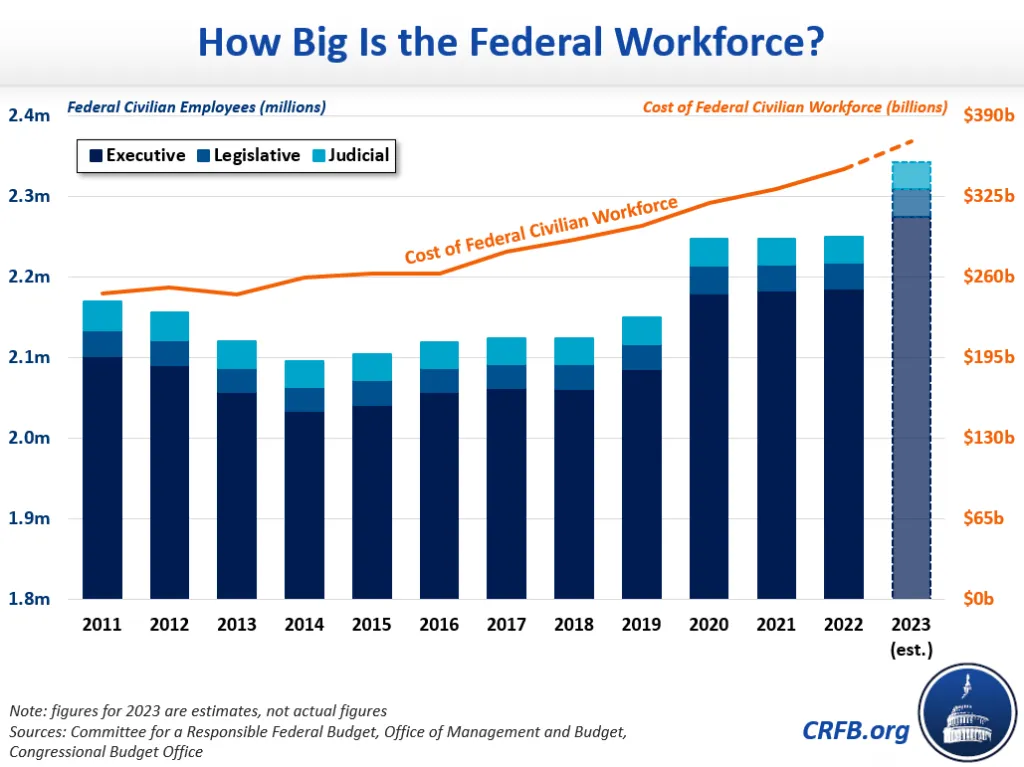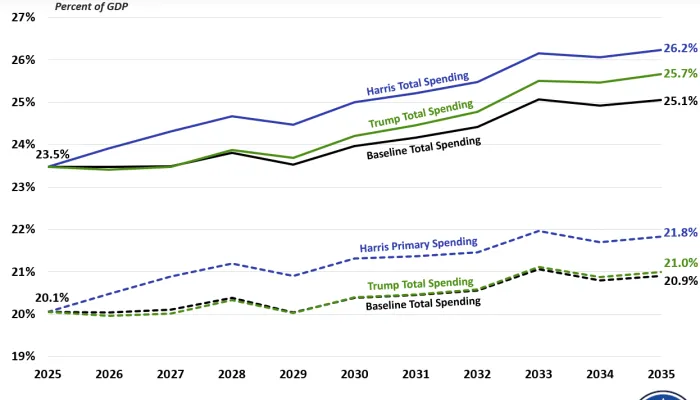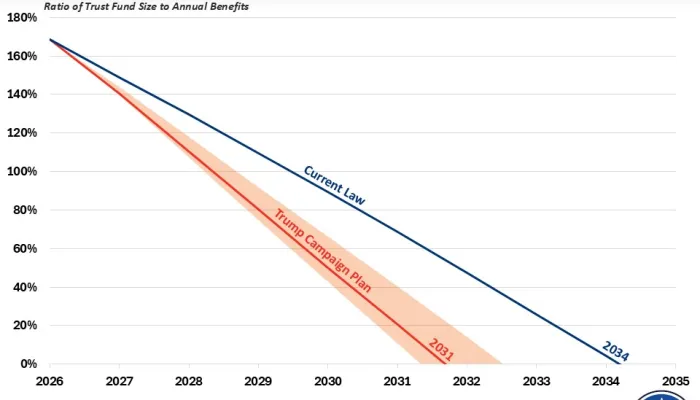Asa Hutchinson's Proposal to Reduce the Federal Civilian Workforce by 10 Percent
Republican presidential candidate Asa Hutchinson recently proposed shrinking the size of the federal civilian workforce, which we estimate could save between $50 and $350 billion over a decade. The following US Budget Watch 2024 explainer analyzes this policy in detail. In the coming weeks and months, we will publish additional analyses covering proposals from presidential candidates in both parties.
US Budget Watch 2024 is a project of the nonpartisan Committee for a Responsible Federal Budget designed to educate the public on the fiscal impact of presidential candidates’ proposals and platforms. Through the election, we will issue policy explainers, fact checks, budget scores, and other analyses. We do not support or oppose any candidate for public office.
During his campaign announcement speech on April 26, 2023, former Arkansas Governor and current Republican presidential candidate Asa Hutchinson said that, if elected president, he would pursue a 10 percent reduction in the federal civilian workforce:
“Too often, our businesses and families are held back by a federal bureaucracy that is out of control, heavy-handed, and wasteful. As President, I will reduce the federal civilian workforce by 10%!”
We estimate this proposal could save the federal government as much as $350 billion over ten years if workers were laid off immediately, $150 billion if the policy was implemented through attrition of workers, and about $50 billion if exemptions were added to the policy. Realization of these savings would be contingent on reduced appropriations levels to account for the lower costs.
Options to Shrink the Federal Civilian Workforce by 10%
| Proposal | Ten-Year Savings |
|---|---|
| Immediately Reduce the Federal Civilian Workforce by 10% | $350 billion |
| Reduce the Federal Civilian Workforce through Attrition, No Exemptions | $150 billion |
| Reduce the Federal Civilian Workforce through Attrition, With Exemptions | $50 billion |
According to the Office of Management and Budget (OMB), the federal government employed over 2.25 million civilian employees in 2022, excluding postal workers.1 At a cost of more than $150,000 per worker – including wages and benefits – the federal government spent about $350 billion on civilian workers last year.
After declining from 2.17 million in 2011 to 2.10 million in 2014, the total number of federal civilian employees increased steadily to 2.25 million by 2020, and OMB projects it will rise further to 2.34 million workers this year. Reducing the workforce by 10 percent would effectively bring the number of federal employees back to 2015 levels.

Over the next decade, we estimate the federal civilian workforce will cost about $4.5 trillion. Accounting for the fact that some of these workers generate revenue and fees for the government, we estimate an immediate 10 percent reduction in the workforce could potentially save about $350 billion over a ten-year period.
However, laying off that many current employees all at once would require substantial changes to laws surrounding federal workers and could be highly disruptive. More likely, lawmakers would implement this policy by shrinking the federal workforce through attrition – for example, by hiring no more than one new employee for every two employees that leave or retire.
We estimate that this approach would save the federal government as much as $150 billion over ten years – less than half the savings of an immediate reduction in the size of the workforce. This discrepancy is largely driven by the time it would take to phase in the reduction of the workforce and that the reduction would be accomplished by hiring fewer new employees, which generally cost less to employ than the existing workforce.
Actual savings could be significantly lower, perhaps as low as $50 billion, if policymakers exempted certain jobs from this attrition rule. A 2018 Congressional Budget Office (CBO) budget option proposed reducing the workforce at each federal agency by 10 percent through attrition while allowing the President to exempt certain agencies based on national security or emergency needs. CBO estimated this exemption would apply to roughly two-thirds of all federal civilian employees based on those who have historically been deemed “essential” and continued working during government shutdowns.
Importantly, the actual savings from this proposal are uncertain. It depends not only on how the workforce is reduced and who is exempted, but also on the pace of reduction, the cost of the employees the policy applies to, and the contribution of those employees to the federal government’s bottom line. Reduction in the size of the federal workforce could also affect the quality, accuracy, and timeliness of government benefits and services.
Finally, it is important to note that savings from reducing the federal workforce would accrue on the discretionary side of the budget and therefore would only translate to lower federal spending if policymakers reduced discretionary agency budgets as well. Without a reduction in funding, there may be little to no savings generated from the smaller workforce, especially if it resulted in more work being contracted out at higher costs.
*****
Throughout the 2024 presidential election cycle, US Budget Watch 2024 will bring information and accountability to the campaign by analyzing candidates’ proposals, fact-checking their claims, and scoring the fiscal cost of their agendas.
By injecting an impartial, fact-based approach into the national conversation, US Budget Watch 2024 will help voters better understand the nuances of the candidates’ policy proposals and what they would mean for the country’s economic and fiscal future.
You can find more US Budget Watch 2024 content here.
1 Measured in Full Time Equivalents (FTEs)


